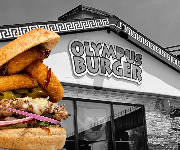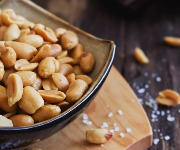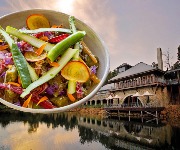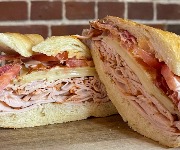Why your favourite curry is a fake
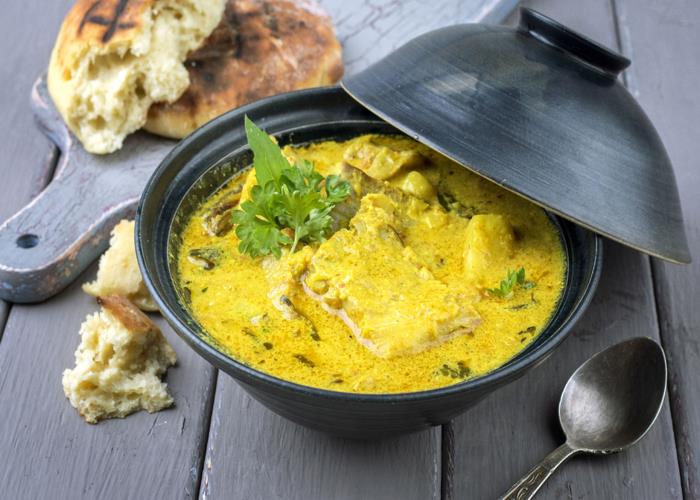
Do you know your Indian dishes from your British Indian ('Brindian')? Discover what your favourite curry is really supposed to taste like.
Most Brits know that this country’s customary ‘curry’ experience is not representative of authentic Indian food. The random selection of dishes that comprise the classic ‘curry house’ menu have been plucked from the vast subcontinental repertoire over time. And, as time goes by, they are considered standard stalwarts by any British curry fiend. But have you ever thought that the genuine article might taste completely different?
In the British lexicon, ‘Indian’ food has been adopted as an adjective that's used with much affection. We might talk of ‘going for an Indian’ – but what we’re mostly accepting is Bangladeshi or Pakistani hospitality.
And the dishes we order from a local takeaway bear little semblance to those they’re named after. You might think them tasty in their own right but, if you fancy yourself as a worldly-wise foodie, it’s only right to dig a little deeper into the history of these delicacies, and discover their roots.
So, from the classic curry house menu, I’ve picked one dish from each ‘heat category’ to explore. And while we’re on the subject of ‘heat categories’, all that classification does, in my opinion, is tell you how much burn a dish will bring. It entirely ignores the intricate spicing and complex history of each item’s original incarnation.
Here are the modern-day imitators and their origins.
Mild: Korma
 The beloved ‘Brindian’ korma is often described as ‘ideal for beginners’ due to its sweet, heatless sauce. But in India, ‘korma’ refers to a whole category of gorgeous gravies of wildly varying heat levels. The one most akin to the typical curry house korma is safed maas (pictured left) – a royal Rajput delicacy whose name means ‘white meat’. It’s the meeker, richer response to Rajasthan’s red-hot, red-coloured laal maas, traditionally made with goat.
The beloved ‘Brindian’ korma is often described as ‘ideal for beginners’ due to its sweet, heatless sauce. But in India, ‘korma’ refers to a whole category of gorgeous gravies of wildly varying heat levels. The one most akin to the typical curry house korma is safed maas (pictured left) – a royal Rajput delicacy whose name means ‘white meat’. It’s the meeker, richer response to Rajasthan’s red-hot, red-coloured laal maas, traditionally made with goat.
Chicken might be the common korma choice in the UK, but safed maas is commonly made with mutton. ‘White’ refers not to the colour of the meat in this case, but to the gravy: a rich concoction made resplendent with cashew paste, dairy, and subtle spicing with sophisticated saffron and cardamom.
You’d need to earn a handsome salary to scoff safed maas on a regular basis – handy, then, that safed maas is regarded as festive fare and not everyday fodder. You certainly wouldn’t see it on an all-you-can-eat buffet. Brindian korma fans can quite legitimately claim they have expensive tastes, although the taste of that takeaway surely lacks the splendour of safed maas.
Medium: Dhansak
 As chef Cyrus Todiwala will tell you, Parsi people are both canny and considerate. When the carnivorous community arrived in India, they mainly settled in Gujarat – a traditionally vegetarian state. But a Parsi without his preferred protein is in a sorry state, so meat was hidden under vegetable-rich gravies like dhansak.
As chef Cyrus Todiwala will tell you, Parsi people are both canny and considerate. When the carnivorous community arrived in India, they mainly settled in Gujarat – a traditionally vegetarian state. But a Parsi without his preferred protein is in a sorry state, so meat was hidden under vegetable-rich gravies like dhansak.
When prepared properly, this silky-smooth gravy is ideal for packing in five-a-day the sneaky way. Dhansak ingredients include aubergine, whose inclusion belies the Persian roots of the Parsis, along with a quartet of different dals made from different lentils, with each contributing its particular properties to the final flavour.
What else makes it marvellous? Sweet red pumpkin and fresh fenugreek and mint leaves all help dhansak leave a lovely taste in the mouth, and a superior spice blend makes it anything but bland. This delicious gravy can be savoured as a stand-alone dish, but if the blended melange meets meat, it’s most commonly mutton. Accompanying rice rendered brown by caramelised onions and sugar is non-negotiable.
You might think a curry night is cause for celebration, but dhansak is never made to mark a merry occasion – it’s actually a traditional funeral dish. Although if you’re eating one on a Sunday you’re also following tradition, because there’s both time to prepare it and to do the post-dhansak digesting.
Hot: Vindaloo
 When Fat Les created that famous curry-themed terrace chant, they weren’t referring to the searing Goan Christian sauce based on a Portuguese preparation. Rather, it was a tribute to the over-chillied, potato-packed curry house version traditionally used as a true test of a man’s mettle. Yes, the original will make you sweat too, but it’s also a complex creation that packs as much flavour as punch.
When Fat Les created that famous curry-themed terrace chant, they weren’t referring to the searing Goan Christian sauce based on a Portuguese preparation. Rather, it was a tribute to the over-chillied, potato-packed curry house version traditionally used as a true test of a man’s mettle. Yes, the original will make you sweat too, but it’s also a complex creation that packs as much flavour as punch.
Goan cuisine is heavily influenced by the Portuguese palate – little wonder given India’s smallest state was under immigrant rule for 400 years. Chillies arrived with Vasco De Gama in 1498, eventually replacing black pepper as a source of heat in the Goan kitchen. Tomatoes were also gradually adopted, and Portuguese preparations were adapted by spice-savvy Indians.
The vindaloo is found in Goa’s Christian kitchens, and the stew’s name came from the included ingredients: vin (wine) and garlic (alhos). In its Indian incarnation, local coconut vinegar commonly replaces the former. The presence of potato in the ‘Brindian’ version is a mistranslation of the stew’s suffix as ‘aloo’.
In the Goan version, you can bid that aloo ‘adieu’ and say hello to pork – the preferred meat in the Western Indian state. By contrast, the Westernised curry house version rarely goes the whole hog, as it’s prepared predominantly by Muslims for whom that meat is off the menu.
So as you can see, curry house classics and their original counterparts are worlds apart. In a land where culinary choice is king, there’s a place for both – but by knowing your Indian from your Brindian, you won't be surprised if you visit a restaurant that deviates from the norm.
What's your favourite curry? And would you like to try the 'genuine' version of it? Or are you happy with the westernised option? Talk to us in the comments box below.
Safed maas photo courtesy of Chef Ash Bhatia/Turban Street Cafe; Chicken Dhansak photo courtesy of Aneesh Bhasin, Indian WineList for Bawi Bride; Vindaloo photo courtesy of Assado.
You might also like
Most Recent
Comments
Be the first to comment
Do you want to comment on this article? You need to be signed in for this feature

